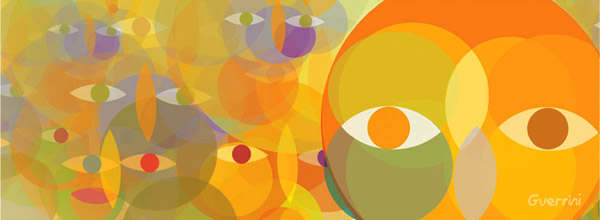There are those who work with images. There are people who are defined as a consultants, advisors or producers of images and from that point they carry out their profession. But what makes an image specialist?
The first action of an image specialist is to evaluate the images related to the object of their work. That is, the images of that someone, something or somewhere that calls them. To do this, he should cover everything related to those images within reason and from there start to drawn up a map regarding their subject. This logic will be based on the demand for their labor.
For its part, this map will position the issue and inform about the causes and effects of the issue such that it will help guide future explorations.
To construct this map of the situation, the specialist can answer some basic questions about the social, cultural and political nature of the images associated with the subject. In the content of these images, the specialist has to find answers to questions such as “who makes what, in terms of what expectations and spectators, though which means, and with which results?” The answers will give some coordinates with which to locate the issue on the map.
Second, the specialist does not work with images. Despite what one might suppose, he does not really mind the shapes and colors. He does not care that it is either a drawing or photo. The only thing that matters to him is the meaning of that image, the significance of these colors, shape and design because the important thing for him is what the image conveys, and not what that image is.
To do this, the specialist should know that the viewers of image only seek to interpret and understand images, and for that reason they are eager to find meaning in what they see.
What do they see? A story. Every picture tells a story that puts into place and produces a definition of the item it represents. A definition that the image viewer compromises with prejudices and norms, and as a result of these compromises, perhaps the image viewer changes their behavior. This implies that for an image nothing makes sense or holds effect outside of a story.
Take an example of politics. It is common to think that the best image for a candidate is to be neat and elegant, well set with a tie and a pressed shirt. However, if the history and image of that society demands of that politican commitment, work and effort, perhaps some misalignment with the traditional image may be a virtue. This requires that a change of image is interpreted as the result of a daily effort of work by that person, not a job that leaves him time to comply with the regular rituals of other politicians. These other politicians, if they are clean and perfumed, obvioulsy did not work as well as ours. But everything depends on how the history of the image represented is perceived.
Thus, thirdly, the image specialist does not work on a single image, he works on perceptions. This implies that what matters is not the particular story that each image narrates, but the mutual articulation of all images that are still significant for the image viewer. All those images are perceived in a particular context, as the specialist works on the relationship of that image with other images. For example, the differences and similarities, the hierarchies and the distances that unite or separate one image from another.
Fourth, the image specialist works with the place and form that the viewer assigns to those images. For this, the specialist encourages the viewer to classify and define a situation belonging to a subject and context.
In other words, the specialist affects how the viewer classsifies what the images transmit and how the information between the spaces is ordered by each viewer in the locker of their mindset.
Fifthly, the specialist must ensure that this information does not disappear and that it does not change place mentally. The specialist must ensure that the memory of it lasts. For this, the specialist must ensure that these images are as solid as the subject, even if it is only an intangible image.
Then he must anchor the meaning of those images, fixing it to a real subject, a subject that the viewer can return to it in order to verify that the image is there, that the memory still exists.
To do this, this material and its objects must embody the history of the image outside the reader’s mind. Thus, the image viewer can not easily forget that image because it will bump into him again and again in his public life and thus will its message.
Sixth, the specialist should teach to who assess the image that this production is saying something. In this way, as in a text written in the air, these images will speak for each trait, attribute and behavior that the specialist recommends. This text will talk about what can be expected from your advice, its potential and its limitations. It will speak of, ultimately, identity.
©Sebastian Guerrini, 2012




